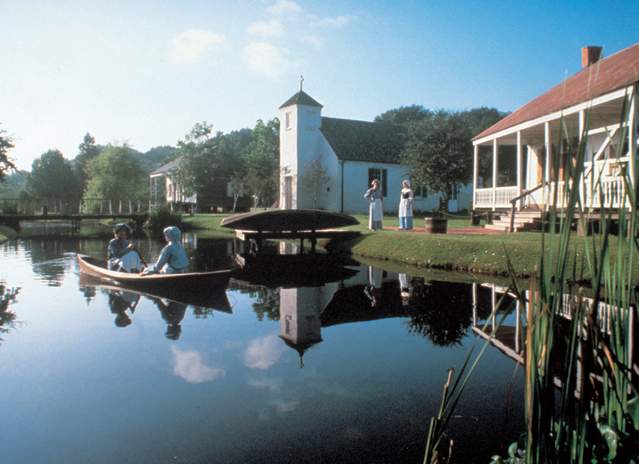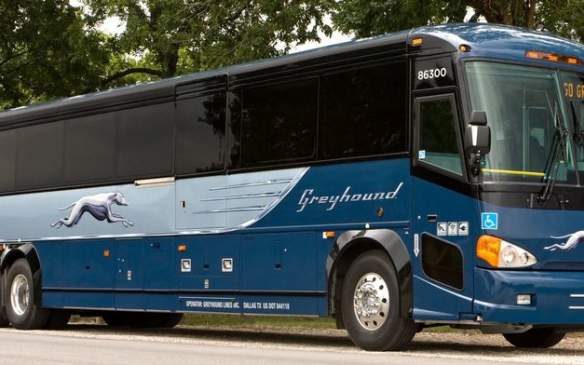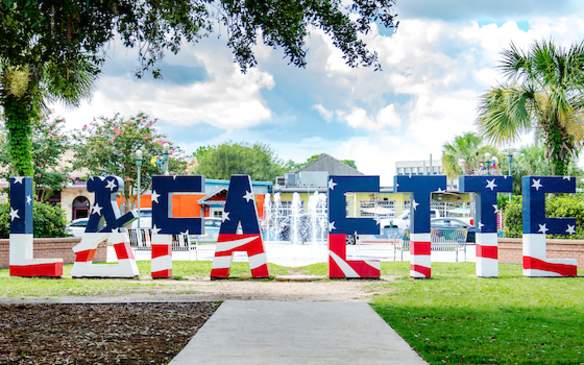Your browser is not supported for this experience.
We recommend using Chrome, Firefox, Edge, or Safari.
History Of Acadiana
The term Acadiana, (a-kay'-dee-anna) has come to signify all that is great about south Louisiana. It encompasses the "joie de vivre" so well-known in Cajun & Creole Country, the "work hard and play hard" attitude exhibited by the people who live here, and the love of the land settled generations ago by our ancestors.
But while the qualities which make this area unique can be traced back to those early settlers, the word Acadiana is relatively new. June 6 [1997] will mark the 26th anniversary of the official state recognition of the area and the adoption of the term Acadiana as a specific region of the state. It was in 1971 that the then-Gov. Edwin Edwards signed the bill designating the 22-parish (county) area of Acadiana, with Lafayette, LA enjoying a geographic position in the heart of the region.
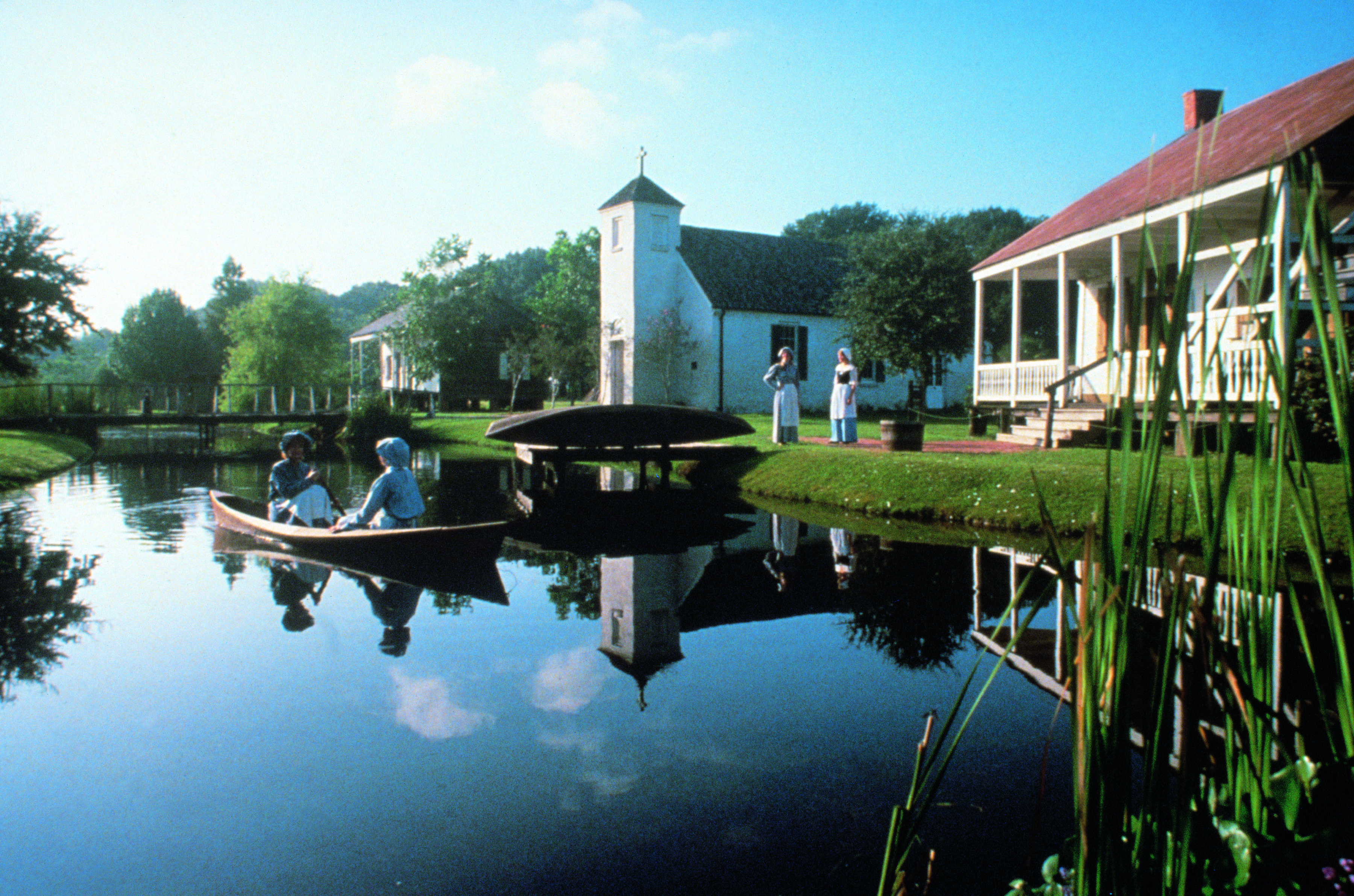
It was only a decade before that the word Acadiana came into existence, and, as with so many treasures of life, was stumbled upon by accident.
When KATC TV-3 began operation in 1962, it was owned by Acadian Television Corp., according to Bill Patton, who served as the station's general manager at the time.
"We began searching for something to identify the area," Patton says. "There were other areas, like ArkLaTex and the Golden Triangle, which were popular, and we wanted something for this area. We thought about terms like 'Evangeline Country,' but nothing seemed right. We covered about a 60-mile radius and we couldn't find anything that really defined the area for us.

"Then, sometime around early 1963, the president of the company and I were going over invoices, and one of them was addressed to Acadiana Television Corp. Someone had typed an extra "a" at the end of the word Acadian. Right away we knew it was what we were looking for. We started using it at the station." The typo was, in fact, a logical combination of the names of the two geographic areas important to Cajun culture; Acadie, the area of Canada from which the French settlers were expelled in the late 1700's and, Louisiana, where they later settled and flourished.
To the station's credit, KATC never tried to copyright the term. That way, everyone would be free to use the term, and it would have a better chance of catching on with the public. The strategy worked. Today, there are dozens of businesses with the word "Acadiana" in its name.
When the Legislature began to consider adopting the term Acadiana and designating a specific geographic location for it, Patton says they were against it.
"We protested," he said. "We thought it was a disservice to the word and to the region, because it really cannot be defined in geographic terms. We felt that if people wanted to think they were in Acadiana that was fine. It was more a feeling, a way of life."
And so it is that today's Cajuns remain true to the way of life handed down from generation to generation, becoming a living legacy to the first Acadians.
“Acadiana: The Region, The World, The Heritage” by Craig Mergist, 1997, Le Guide, Volume 18, Number 3, used with permission
Acadian Flag
Thomas J. Arceneaux designed the Louisiana Acadian Flag to commemorate the 200th anniversary of the Acadian exile into Louisiana and to remind us of other important influences on Acadians. Arceneaux, a native of Carencro, La., is a life-long supporter of English-French bilingual education in Louisiana Schools and was a charter member of the Council for the Development of French in Louisiana (CODOFIL). He is the former Dean of Agriculture (1941-1973) at the University of Southwestern Louisiana in Lafayette, LA and was one of the early leaders of the Louisiana French renaissance movement that revived interest and pride in the French-Acadian heritage.

Description of the Acadian flag:
Three silver fleurs de lis on a blue field represent the French origin of the Acadians. The fleurs de lis is a symbol of the kings of France.
When the Acadians arrived in Louisiana, it was under Spanish rule. Since the Acadians prospered in Louisiana after years of exile, a portion of the flag pays homage to Spain with a gold tower on a red field representing the Old Arms of Castille, a prosperous European Spanish kingdom.
The gold star on a white field represents "Our Lady of the Assumption", Patroness of the Acadians. When the first settlers departed France for the New World, the Virgin Mary was highly revered. It was a period of great devotion to the Virgin. The King of France, Louis XIII, and Pope Pius XI declared the Virgin Mary the patroness of the kingdom, (Patronne de Royaume) and Patroness Saint of all the Acadians in Canada, Louisiana and elsewhere. On August 15, 1638, France and her colonies were consecrated to Mary under the title "Our Lady of the Assumption".
The star also symbolizes the active participation of the Acadians in the American Revolution as soldiers under Spanish Governor Galvez. Shortly after the arrival of the displaced Acadians in the Spanish territory of Louisiana, the American colonies started their struggle for independence. Spain decided to champion the cause of the 13 American colonies in their revolution against the same English nation that had so cruelly exiled the Acadians. The Acadians chose to serve under Galvez, the Governor of Spanish Louisiana, and they actively participated in the battles of Manchac, Baton Rouge, Mobile and Pensacola, which were all very important and decisive victories that contributed to the successful conclusion of the American Revolution.
Since the Acadians were citizens of Spain at the time of the American Revolution, their star could not appear on the first American flag. Thus, the gold star on the Louisiana Acadian Flag serves as a reminder of Louisiana's participation in the American Revolution and the significant contributions of the Louisiana Acadians during the struggle for the beginning of a new nation.
Flag Of Creoles
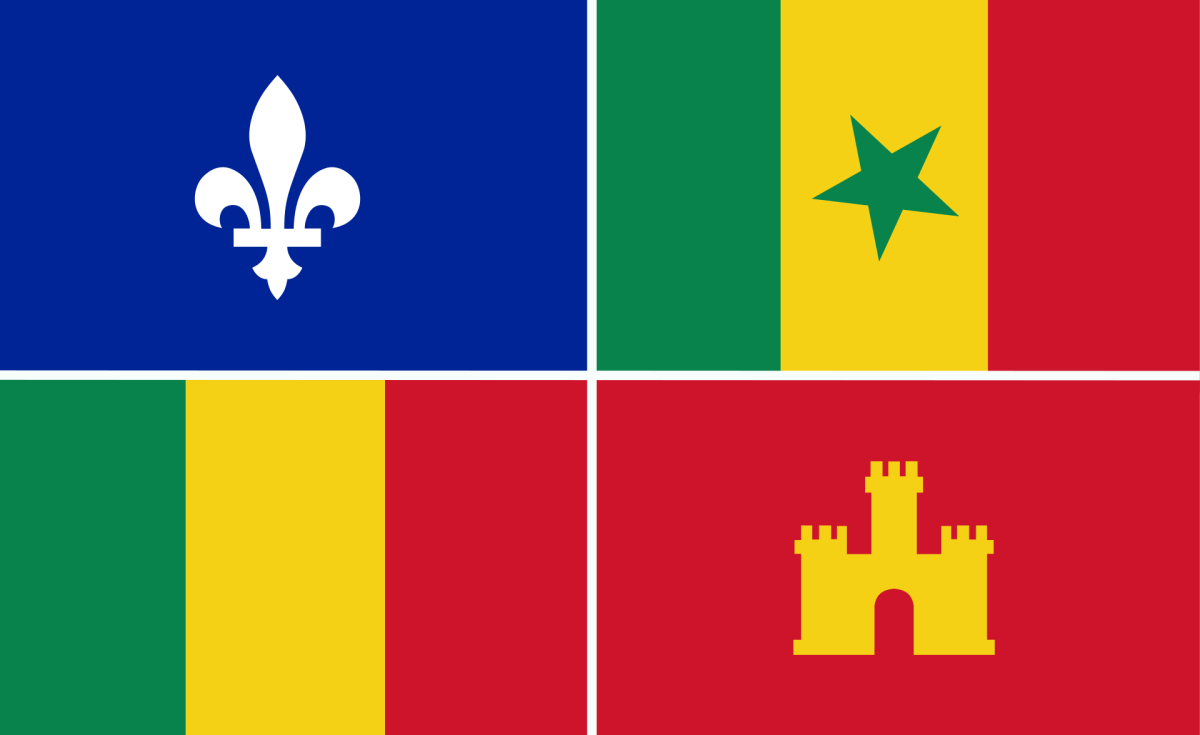
Designed by Pete Bergeron in 1987 and adopted by C.R.E.O.L.E., Inc., a Lafayette ,LA based African-American heritage preservation group, the Flag of Louisiana Creoles represents the cultural melting pot that is the Louisiana Creoles. The first flag was handstitched by Bergeron's sister, Delores Kay Conque of Carencro, La.
By adopting the Creole flag, C.R.E.O.L.E., Inc. upholds its mission statement, "to identify, preserve and promote the numerous aspects of the Creole culture of southwest Louisiana."
Today there are Creole populations in New Orleans, St. James Parish, Isle Brevelle, Cane River, Opelousas, Lafayette, LA and other Louisiana towns. The Creole flag celebrates the mixed lineage, culture and religion of these Louisiana Creoles.
Description of the Creole flag:
The upper left section, a white fleur de lis on a blue field, represents Louisiana's French heritage. On the lower left and upper right sections, West African heritage is represented by the Mali Republic National tri-color flag (green, yellow and red) and the Senegal Republic National flag (blue, yellow and red). Spanish Colonial heritage is depicted by the Tower of Castille (gold tower on a red field) on the lower right section. A white cross dividing the four symbols represents the Christian faith accepted by the Muslim and Islamic from Senegal and Mali in Louisiana.
Inspiration Journal
Lafayette's blog showcasing the food, music, culture and history at the heart of Cajun & Creole Country.
See All PostsLafayette Weekly
A Message From Lafayette Travel This week’s Lafayette Weekly is bittersweet for everyone who knew and loved Chris Stafford and his music. Chris transcended the label of…
Eight Reasons Why Lafayette Is The Ultimate Destination for Your Next Meeting or Convention
Are you searching for the perfect location for your next meeting or convention? Look no further than Lafayette, Louisiana! Known as the Happiest City in America, Lafayette offers a…
Blu Basil
Dang Nguyen has one of those origin stories that makes you want to try his food. He's a Vietnamese American who owns and operates two Lafayette restaurants: Saigon Noodles on…
Burgersmith
In the olden days, when you wanted something handcrafted, you went straight to the source. Burgersmith, a play on the word blacksmith, takes the concept of handcrafted and applies…
Getting to Lafayette
The city of Lafayette, LA is located in the center of Lafayette Parish at the intersection of I-10 and I-49 between New Orleans and Houston and only 35 miles north of the Gulf of Mexico.
